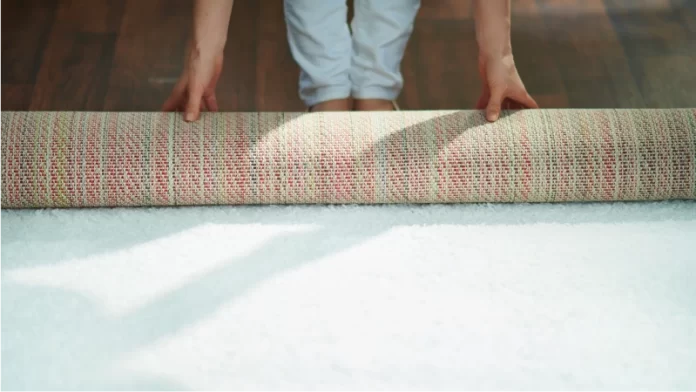Understanding the correct way to fold a carpet, especially with machine-made carpets, is fundamental for preserving its quality and extending its lifespan. Whether you’re planning to move furniture or store an unused carpet, knowing the proper folding technique is crucial.
Importance of Carpet Folding:
Carpet folding is pivotal for both hand-woven and machine-made carpets. However, it’s particularly crucial for hand-woven carpets due to their high value as art pieces and the vulnerability of their natural fibers (wool, cotton, silk). Any misstep in maintenance might result in significant financial loss.
Is Folding the Right Approach?
Ideally, no. Rolling the carpet is the preferred method as it minimizes the risk of altering the carpet’s shape. If possible, storing the carpet rolled or moving it flat in a drawer is highly recommended to maintain its integrity.
Considerations for Proper Handling:
• Levelling: When folding, involve two or three people to prevent the edges from bending, especially in the case of large carpets, as it might cause damage over time.
• Pest Management: For stored carpets, particularly hand-woven ones, use substances like tobacco or naphthalene to deter insects and prevent damage.
• Addressing Damages: Repair any existing damage such as tears or rot before storing the carpet, as these issues tend to worsen over time.
• Protective Covering: After rolling, wrap the carpet in a clean cloth to prevent dust accumulation. Plastic covers may induce moisture, leading to mold.
Correct Methods for Folding Carpets:
1. One-Layer Method (Long-Term Storage):
Lay the carpet upside down on the floor.
Fold it in half lengthwise from either side.
Smooth and moisten the folded sections.
Fold a third of the width against the direction of the fibers.
Continue folding until it forms a small rectangle.
Secure with a rope to prevent unraveling.
2. Two-Layer Method (For Transportation):
Place the carpet on a flat surface with its back facing up.
Fold it lengthwise up to a third.
Repeat folding steps.
Place the remaining third over the folded part.
Fold a third of the width against the carpet.
Continue folding until it forms a compact rectangle.
Secure tightly with a strong rope for transportation.
Additional Tips:
• Storage: Opt for a dry, well-lit, and moisture-free warehouse for long-term storage.
• Preventive Measures: Clean stains, apply naphthalene between layers to deter pests, and periodically unroll the stored carpet to prevent fabric destruction and moisture buildup.
Mastering the correct carpet folding techniques is essential, especially in scenarios where rolling the carpet isn’t feasible due to space constraints. By following these methods and maintenance tips, you can effectively preserve the quality and durability of your carpets.
This comprehensive guide provides insights into the significance of carpet folding, the preferable rolling method, and step-by-step instructions for both one-layer and two-layer folding techniques for maintaining the quality of machine-made and hand-woven carpets.




